Juniper JN0-682 Data Center Professional (JNCIP-DC) Exam Practice Test
Data Center Professional (JNCIP-DC) Questions and Answers
You are building an IP fabric underlay network for your new data center. You must ensure that you have predictable load-balancing behavior throughout your network. According to Juniper Networks, what are two best practices that should be followed in this scenario? (Choose two.)
Host1 and host2 are connected to an EVPN signaled VXLAN overlay, and must have Layer 3 connectivity. The VNI and VLAN assignments are shown in the exhibit.
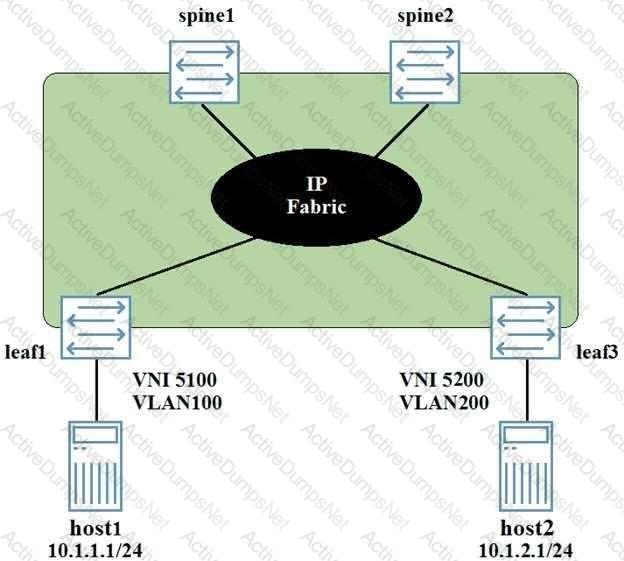
In this scenario, which two statements are true? (Choose two.)
You are asked to enable plug-and-play line card switches in an active VCF without making any future Junos configuration charges. You are also required to ensure that all new line card are automatically upgrade to the correct Junos version without any manual intervention. In this scenario, which two actions will accomplish this task? (Choose two.)
Application developers are complaining that east-west server traffic is not being load balanced in
your new data center. What are three reasons for this behavior? (Choose three.)
You are configuring a DCI VPN solution between sites that require an L3VPN to work with your EVPN deployment. Your organization's policy restricts configuring RSVP and LDP on your WAN links. While configuring the solution, you notice that no routes exist in the inet table. In this scenario, which parameter will solve this problem?
You are evaluating which method to use for learning MAC addresses in your VXLAN network. Which statement is true in this scenario?
Which EVPN route type would be used in DCI situation in which the IP subnets between data center are complete unique?

Referring to the exhibit, which two statements are correct in a seamless EVPN-VXLAN stitching DCI design? (Choose two.)
Referring to the exhibit, which statement is correct?
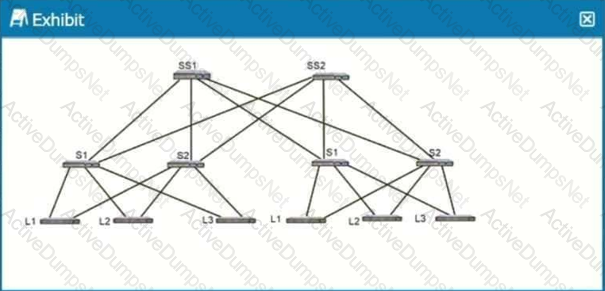
The two data centers shown in the exhibit need to be connected using EVPN. Which two statements are correct in this situation? (Choose two.)
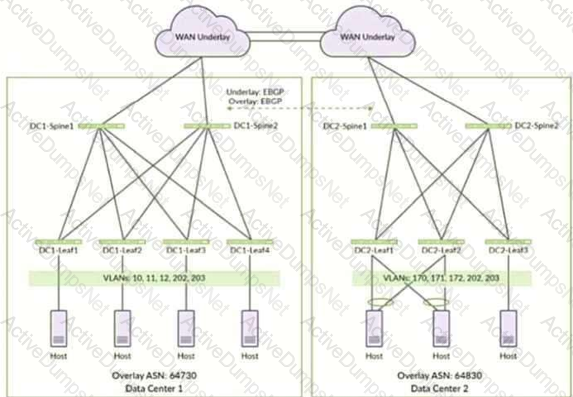
You are asked to design a deployment plan for a large number of QFX Series switches using
ZTP. The ZTP deployment plan must ensure all switches are configured with their designated configuration file.
Which DHCP option and subscription combination would be used to accomplish this task?
Referring to the exhibit,
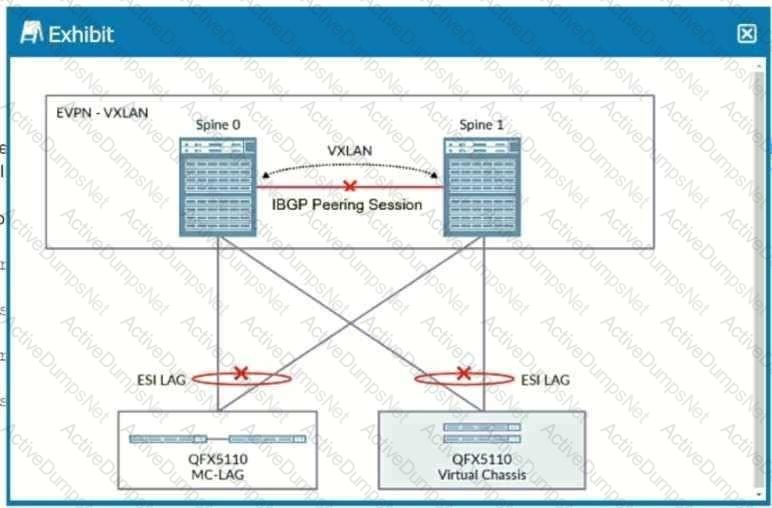
you have a data center in which only the spine devices are using EVPN and VXLAN. The leaf nodes are multihomed in active-active mode to the spine nodes through ESI LAG interfaces. In this design, a link failure on the interface connecting the spine nodes would also cause all traffic from the spine to the leaf nodes to drop.
In this scenario, which command configured on which nodes would solve this problem?
Which two statements about the seamless EVPN-VXLAN stitching data center interconnect architecture are correct? (Choose two.)
A VXLAN has been created between devices leaf1 and Ieaf3.
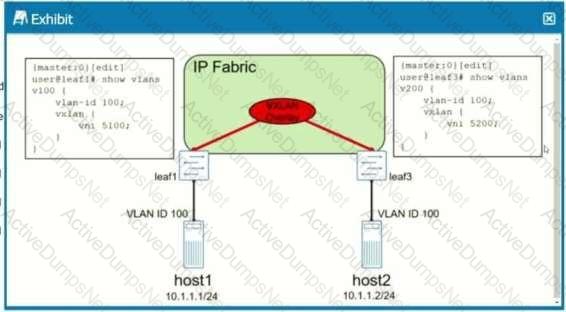
Referring to the exhibit, which statement is true?
Which two statements are correct about a spine and leaf-based IP fabric? (Choose two.)
You are asked to enable visibility into your EVPN-VXLAN network traffic by monitoring traffi
continuously. Which two statements are correct in this scenario? (Choose two.)
Which two statements are true Virtual Chassis? (Choose two.)
You have a two spine and four leaf CRB topology and you must ensure that the hosts connected
to the leaf devices have reachability to all IRB interface addresses, including the local spine IRB
addresses, and the virtual gateway address.
Which two configuration parameters must be used to accomplish this task? (Choose two.)
Site 1 contains 20+ VMs. The link between Site 1 and Leaf1 goes down.Referring to the exhibit, which statement is correct?
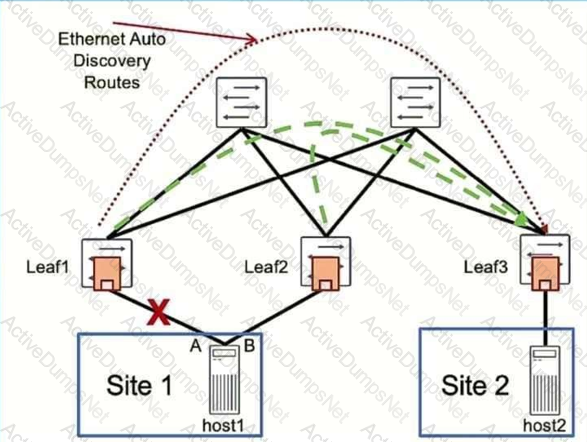
You administer an EVPN-VXLAN fabric. You notice that there is no VXLAN traffic forwarding through the network.
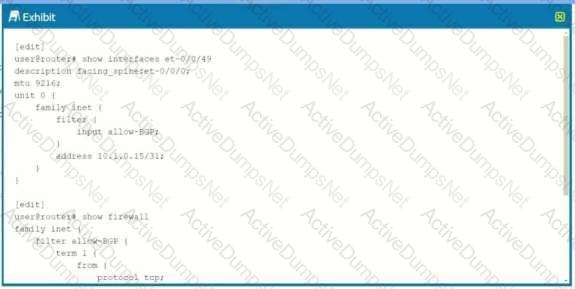
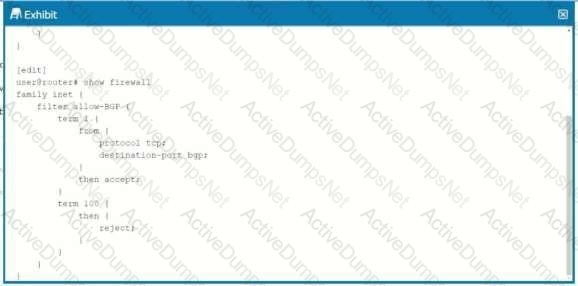
Referring to the exhibit, which modification will solve the problem?
You are asked to scale the available bandwidth within your Clos data center network to support more east-west traffic. In this scenario, what are two ways to accomplish this task? (Choose two.)
You are troubleshooting a traditional Clos Layer 3 IP fabric in your data center. You are reviewing
the BGP configuration for one of your spine devices.
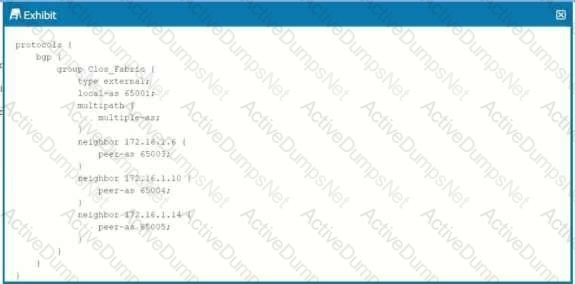
Referring to the exhibit, which statement is correct?
You are asked to manage multicast traffic in the EVPN-VXLAN environment. You must ensure that multicast traffic is delivered only to the leaf device with interested receivers. In this scenario, which feature is required on leaf devices to accomplish this task?
You are implementing an EVPN overlay in your IP fabric data center. The IP fabric was stable before configuring the overlay group and EVPN-related settings. After committing the configuration shown in the exhibit on your spine device, you are no longer exchanging any routes in your underlay fabric.
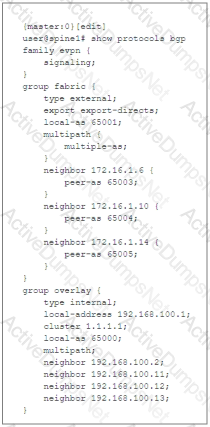
In this scenario, what will solve this problem?
You have a data center design with multiple tenants using routing instances.
In this scenario, what are two ways to provide inter-tenant communications? (Choose two.)
You are asked to implement VXLAN in your data center network. You must choose between
implementing EVPN signaling and multicast signaling. Which two statements are correct in this scenario? (Choose two.)
An EVPN-signaled VXLAN overlay has been deployed in the network shown in the exhibit. An EVPN LAG has been configured to connect host1 to the network, and device leaf1 has been elected as the designated forwarder.
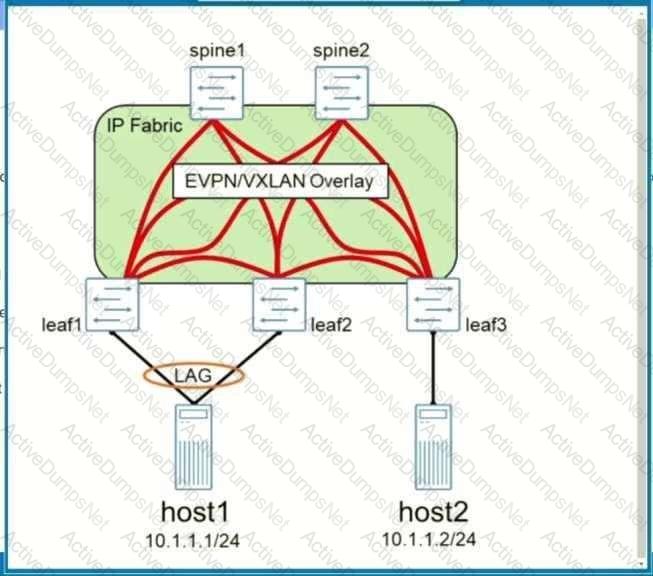
In this scenario, which statement is true?
You are troubleshooting a connectivity issue across a VXLAN overlay network. In the exhibit, you are using the ping overlay command from a local VTEP residing on a OFX 5120 to a remote VTEP residing on a separate QFX5120.
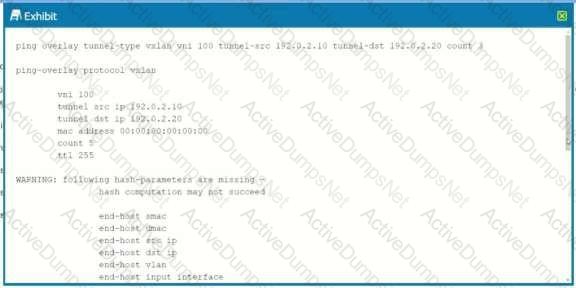
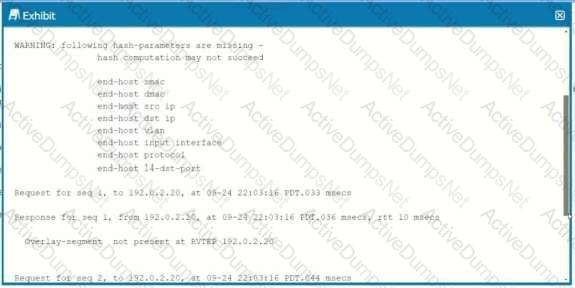
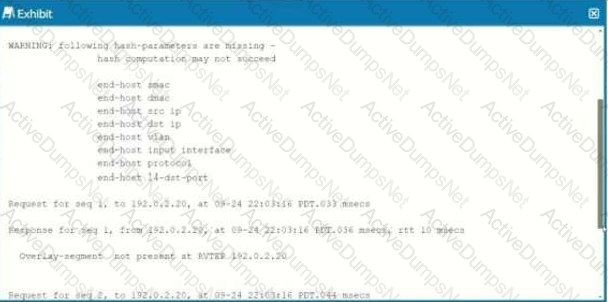
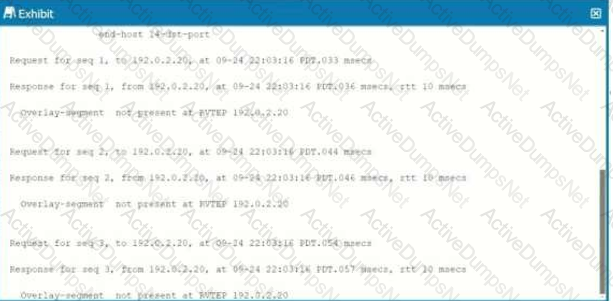
What is the problem in this situation?
In the exhibit, VM1 is part of the same VXLAN segment as VM3.
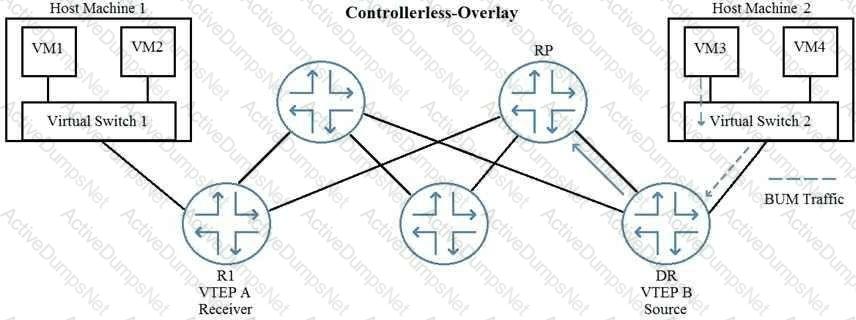
Which type of message will VTEP B initially send to the RP so that VM3 can communicate with VM1?
A VXLAN adds 50 to 54 bytes of extra header information to an Ethernet frame. In this scenario,
how would you accommodate this increased?
You have deployed a multitenant EVPN-VXLAN fabric. You must have the routes in the BLUE VRF show up in the RED VRF.In this scenario, how would you achieve this goal?
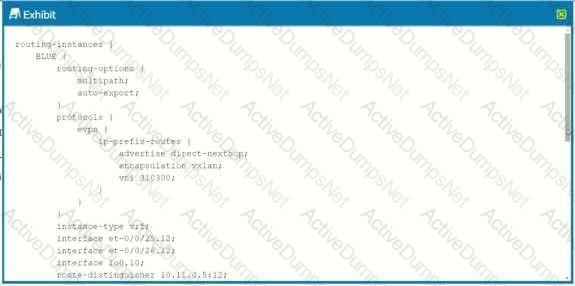
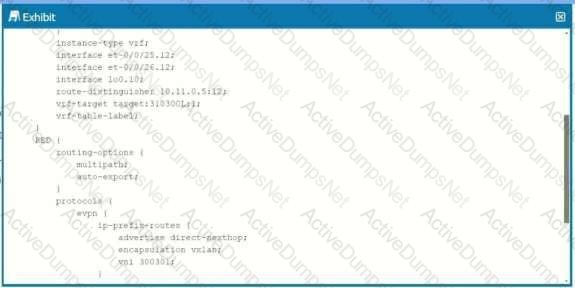
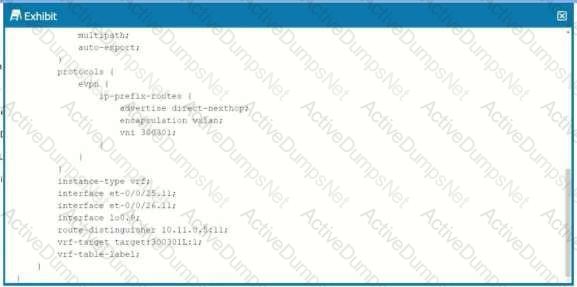
Which EVPN router type prevents BUM traffic from looping back to a multihued host?
Referring to the exhibit, Host 1 and Host 3 have exchanged traffic.
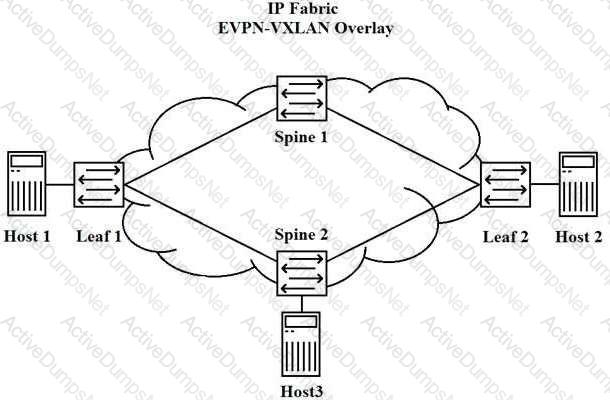
In this scenario, which statement is true?
You host a multitenant data center that runs VMware. You must perform deep packet inspection
on all inter-tenant traffic that is flowing between the VMs within the same hypervisor. Your solution must provide the security services without needing to leave the physical device. In this scenario, what should you do to solve this problem?
You are asked to increase the overall throughput of an existing IP fabric.
Which two tasks would accomplish this goal? (Choose two.)
Referring to the exhibit, which two statements are correct?(Choose two.)
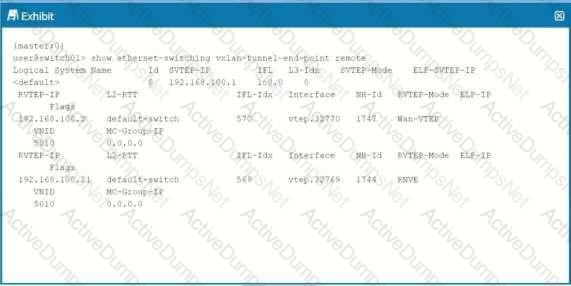
You are asked to implement a monitoring and telemetry solution for the QFX Series devices in
your IP fabric that uses a push model to collect both system event data and statistical data for your QFX Series devices.
Which technology satisfies your requirements?
Which two statements describe MAC address learning for VPLS and EVPN? (Choose two.)
Which two statements define the use of route targets and route distinguishers in an EVPN? (Choose two.)
You must advertise reachability between two firewalls with unique IP subnets that terminate security services through your EVPN-VXLAN environment.
In this scenario, which EVPN route type should you enable to accomplish this task?
When considering VRF routing-instances for network segmentation, which two statements are
true? (Choose two.)
You choose the EBGP design shown in the exhibit as your IP fabric design. You must ensure that both routes received by the spine nodes will be used for ECMP forwarding.
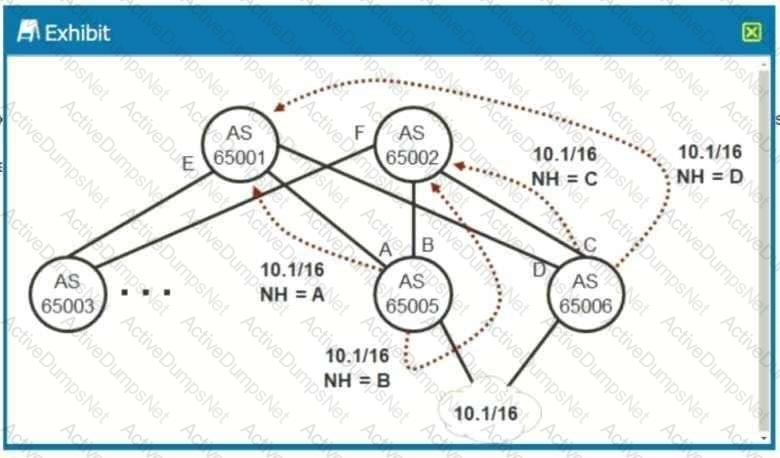
Which BGP parameter would need to be added to the EBGP configuration of the spine nodes to achieve this goal?
You are deploying a switch using ZTP.
Which two statements are true in this scenario? (Choose two.)
You are troubleshooting an L3VPN that is part of an EVPN/MPLS DCI. You notice that the EVPN overlay BGP session toward 10.29.50.4 is unable to establish.
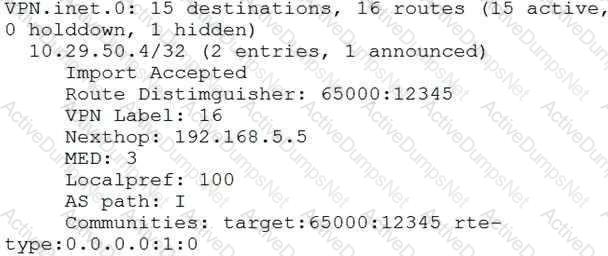
Why is the BGP session failing to establish?
You need to add perimeter security to the network shown in the exhibit. All traffic must be inspected for attacks. The edge routers are using all available ports.Your solution must maintain both port and device resiliency.
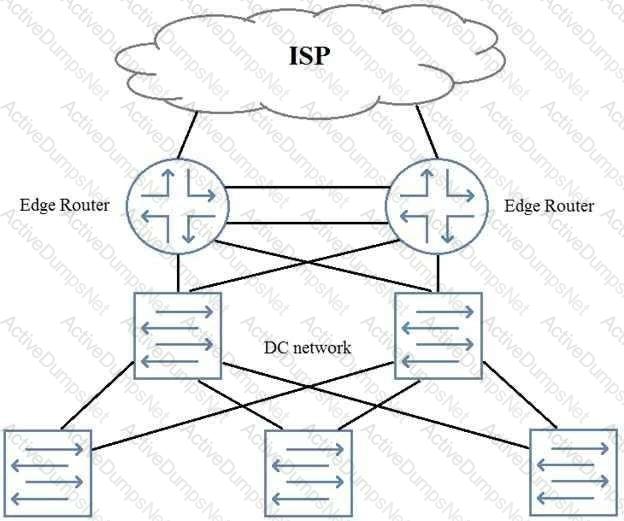
In this scenario, which design would satisfy these requirements?
You want to configure redundant Layer 3 gateways
In this scenario, which two juniper best practices would accomplish this task? (Choose two.)
